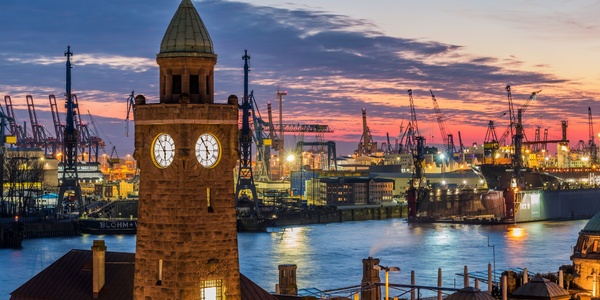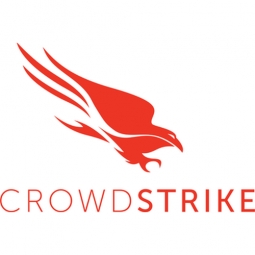公司规模
Large Corporate
地区
- Europe
国家
- France
- United Kingdom
- Germany
- Ireland
- Poland
产品
- CrowdStrike Falcon Complete™
- Falcon Overwatch™
- Falcon Discover™
- Falcon Device Control™
技术栈
- Managed Detection and Response (MDR)
- Endpoint Security
- IT Hygiene
实施规模
- Enterprise-wide Deployment
影响指标
- Customer Satisfaction
- Digital Expertise
技术
- 网络安全和隐私 - 端点安全
- 网络安全和隐私 - 安全合规
适用行业
- 建筑与基础设施
适用功能
- 商业运营
用例
- 入侵检测系统
服务
- 网络安全服务
- 系统集成
关于客户
SIG is a publicly traded supplier of specialist building products and solutions, serving commercial customers across the UK, France, Germany, Ireland, Poland, and Benelux. With a workforce of 6,500 employees spread across 425 locations, SIG is a significant player in the European construction industry. The company provides a wide range of building solutions, catering to various construction needs. As a large corporate entity, SIG operates with a lean IT organization, supported by regional teams and a centralized IT function. The company places a strong emphasis on building vendor partnerships to enhance its security posture and ensure the protection of its operations. SIG's commitment to cybersecurity is evident in its proactive approach to evaluating and reinforcing its cybersecurity strategy, particularly in the face of growing cyber threats. The company's focus on endpoint protection and its decision to partner with a reliable cybersecurity vendor highlight its dedication to safeguarding its operations and maintaining business continuity.
挑战
SIG, a leading European building solutions provider, faced a significant cybersecurity challenge when a GandCrab ransomware attack struck over 600 devices in its France-based operations. This incident forced the company to shut down its entire French operation, which accounts for almost 30% of its total revenues. The attack highlighted the growing threat of cyberattacks and the vulnerability of endpoint devices. At the time, SIG had multiple endpoint antivirus products in place, but they were proving ineffective due to unnecessary administration challenges and the varying efficacy of the products. The company had a lean IT organization, with regional teams supported by a centralized IT function, making it crucial to find a reliable cybersecurity partner to augment their internal team. The SIG security team had already begun evaluating its cybersecurity culture and infrastructure to protect against such threats, especially for end users who were seen as primary targets. The ransomware attack underscored the need for a robust endpoint protection strategy and the importance of selecting a capable cybersecurity vendor.
解决方案
To address the cybersecurity challenges, SIG decided to reinforce its cybersecurity strategy with a focus on endpoint protection. The company evaluated independent consultants' reports and recommendations, including research by Gartner and Forrester, to select an endpoint security vendor. CrowdStrike emerged as the favored choice due to its proven managed service capability, reputation, and quality of response during the tender process. SIG deployed CrowdStrike Falcon Complete™ managed detection and response (MDR) to protect thousands of dispersed endpoints across 425 locations in multiple European countries. The deployment began in the UK and was completed on schedule, but the rollout to other countries was slower due to various reasons. Despite this, CrowdStrike was considered a critical component of SIG's security posture, and the company prioritized its deployment to ensure protection. In France, CrowdStrike endpoint agents had just been installed on a couple of devices when the ransomware attack occurred. These protected devices detected the attack and alerted SIG, enabling the company to take action to prevent the ransomware from spreading further. SIG mobilized its global IT team and partners, and CrowdStrike provided critical incident support, helping SIG triage the incident and providing vital information on the GandCrab ransomware variant. The SIG IT team worked to rebuild key infrastructure components and reimage devices across branch locations in France to return to normal business operations.
运营影响
数量效益

Case Study missing?
Start adding your own!
Register with your work email and create a new case study profile for your business.
相关案例.

Case Study
IoT System for Tunnel Construction
The Zenitaka Corporation ('Zenitaka') has two major business areas: its architectural business focuses on structures such as government buildings, office buildings, and commercial facilities, while its civil engineering business is targeted at structures such as tunnels, bridges and dams. Within these areas, there presented two issues that have always persisted in regard to the construction of mountain tunnels. These issues are 'improving safety" and "reducing energy consumption". Mountain tunnels construction requires a massive amount of electricity. This is because there are many kinds of electrical equipment being used day and night, including construction machinery, construction lighting, and ventilating fan. Despite this, the amount of power consumption is generally not tightly managed. In many cases, the exact amount of power consumption is only ascertained when the bill from the power company becomes available. Sometimes, corporations install demand-monitoring equipment to help curb the maximum power demanded. However, even in these cases, the devices only allow the total volume of power consumption to be ascertained, or they may issue warnings to prevent the contracted volume of power from being exceeded. In order to tackle the issue of reducing power consumption, it was first necessary to obtain an accurate breakdown of how much power was being used in each particular area. In other words, we needed to be able to visualize the amount of power being consumed. Safety, was also not being managed very rigorously. Even now, tunnel construction sites often use a 'name label' system for managing entry into the work site. Specifically, red labels with white reverse sides that bear the workers' names on both sides are displayed at the tunnel work site entrance. The workers themselves then flip the name label to the appropriate side when entering or exiting from the work site to indicate whether or not they are working inside the tunnel at any given time. If a worker forgets to flip his or her name label when entering or exiting from the tunnel, management cannot be performed effectively. In order to tackle the challenges mentioned above, Zenitaka decided to build a system that could improve the safety of tunnel construction as well as reduce the amount of power consumed. In other words, this new system would facilitate a clear picture of which workers were working in each location at the mountain tunnel construction site, as well as which processes were being carried out at those respective locations at any given time. The system would maintain the safety of all workers while also carefully controlling the electrical equipment to reduce unnecessary power consumption. Having decided on the concept, our next concern was whether there existed any kind of robust hardware that would not break down at the construction work site, that could move freely in response to changes in the working environment, and that could accurately detect workers and vehicles using radio frequency identification (RFID). Given that this system would involve many components that were new to Zenitaka, we decided to enlist the cooperation of E.I.Sol Co., Ltd. ('E.I.Sol') as our joint development partner, as they had provided us with a highly practical proposal.

Case Study
Splunk Partnership Ties Together Big Data & IoT Services
Splunk was faced with the need to meet emerging customer demands for interfacing IoT projects to its suite of services. The company required an IoT partner that would be able to easily and quickly integrate with its Splunk Enterprise platform, rather than allocating development resources and time to building out an IoT interface and application platform.

Case Study
Bridge monitoring in Hamburg Port
Kattwyk Bridge is used for both rail and road transport, and it has played an important role in the Port of Hamburg since 1973. However, the increasing pressure from traffic requires a monitoring solution. The goal of the project is to assess in real-time the bridge's status and dynamic responses to traffic and lift processes.

Case Study
Bellas Landscaping
Leading landscaping firm serving central Illinois streamlines operations with Samsara’s real-time fleet tracking solution: • 30+ vehicle fleet includes International Terrastar dump trucks and flatbeds, medium- and light-duty pickups from Ford and Chevrolet. Winter fleet includes of snow plows and salters.

Case Study
Condition Based Monitoring for Industrial Systems
A large construction aggregate plant operates 10 high horsepower Secondary Crusher Drive Motors and associated conveyor belts, producing 600 tons of product per hour. All heavy equipment requires maintenance, but the aggregate producer’s costs were greatly magnified any time that the necessary maintenance was unplanned and unscheduled. The product must be supplied to the customers on a tight time schedule to fulfill contracts, avoid penalties, and prevent the loss of future business. Furthermore, a sudden failure in one of the drive motors would cause rock to pile up in unwanted locations, extending the downtime and increasing the costs.Clearly, preventative maintenance was preferable to unexpected failures. So, twice each year, the company brought in an outside vendor to attach sensors to the motors, do vibration studies, measure bearing temperatures and attempt to assess the health of the motors. But that wasn’t enough. Unexpected breakdowns continued to occur. The aggregate producer decided to upgrade to a Condition Based Monitoring (CBM) sensor system that could continually monitor the motors in real time, apply data analytics to detect changes in motor behavior before they developed into major problems, and alert maintenance staff via email or text, anywhere they happened to be.A wired sensor network would have been cost prohibitive. An aggregate plant has numerous heavy vehicles moving around, so any cabling would have to be protected. But the plant covers 400 acres, and the cable would have to be trenched to numerous locations. Cable wasn’t going to work. The aggregate producer needed a wireless solution.








